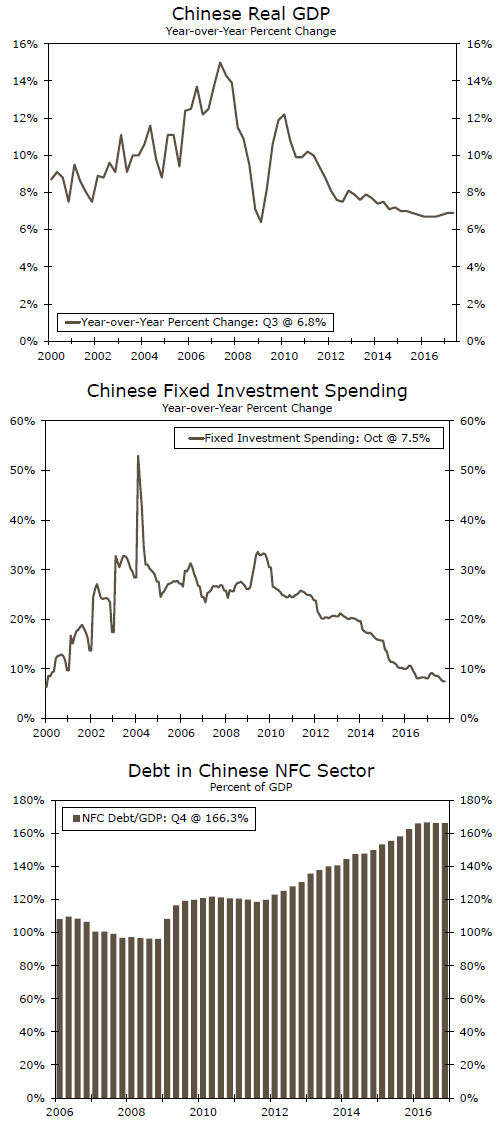Chinese real GDP growth met expectations in Q3, rising 6.8 percent year-over-year. The deceleration in fixed investment spending in China continued, however, as a result of both secular and cyclical trends.
Chinese GDP Growth Slows Slightly in Q3
Data released today showed the Chinese economy growing 6.8 percent on a year-ago basis in Q3, matching the Bloomberg consensus forecast (top chart). The print marks a 0.1 percentage point slowdown from the 6.9 percent pace registered through the first two quarters of the year.
Although a breakdown of GDP into its demand components is not yet available, sector level data indicate that growth was largely steady in the key sectors of the Chinese economy. Growth in the secondary industry, which includes mining/quarrying, manufacturing, construction and utilities production, ticked lower by 0.1 percentage point to 6.3 percent on a year-over-year, year-to-date basis. The momentum may have reversed course late in the quarter, however, as Chinese industrial production data released in a separate report today showed output climbing 6.6 percent year-over-year in September, a marked improvement from the 2017 low of 6.0 percent growth in August. Growth in the tertiary industry, or the service sector, was modestly stronger, as was output in the primary sector, which includes agriculture, forestry and fishing.
Economic growth in China has firmed in 2017 relative to last year’s pace amid the stronger global growth environment. At present, we expect real global GDP to accelerate about half a percentage point in 2017 from the growth rate registered in 2016. Even with the faster growth at home and abroad, fixed investment spending in China has continued to decelerate (middle chart). Some of the slowdown has been the continuation of a secular trend; investment spending has decelerated for most of this cycle as the Chinese economy continues the steady transition towards a more consumption-oriented growth model. To that point, retail sales data released today showed continued double-digit year-to-date growth through the month of September. More recently, investment spending growth has continued to slow as Chinese policymakers have moved to tighten policy amid concerns that the credit expansion, that occurred when the economy was slowing, might lead to debt imbalances.
Outlook Is for Modestly Slower Growth in China in 2018
As we have highlighted in previous reports, the leverage in the nonfinancial corporate sector in China, particularly for state-owned enterprises (SOEs) is an area we have identified as a potential risk to the outlook (bottom chart).* At the ongoing 19th Party Congress, the signals from leaders have suggested that policymakers will not move anytime soon to scale back the SOEs. We do not believe the corporate leverage/SOE challenges are likely to cause an implosion in the Chinese economy anytime soon, but they do represent both a downside risk to the outlook and a secular drag on the economy’s potential growth rate. We continue to expect real GDP in China to decelerate modestly in 2018 to a 6.3 percent pace.













